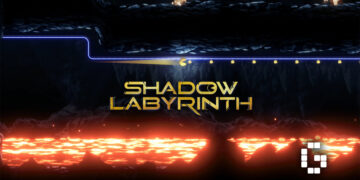Square Enix’s Triangle Strategy has been quite the underdog hit for the Nintendo Switch, with an interesting story that leads to three morally nuanced endings, along with a hidden ‘golden’ ending. We recently had an interview with the producer of Triangle Strategy, Yasuaki Arai who told us more about the game and its different endings.

Story paths may branch out drastically, but in the end, they will end up in a similar situation with the exception of endings. What is the reason behind this storytelling design?
Arai: There were various twists and turns that we had to overcome when structuring the plot, but in the end, we took the approach that Mr. Asano [director] had decided on with the development team. We then worked on setting the game’s concept and generated multiple endings – including a “spot-on” ending.
The three main characters had been placed in the center of these endings, which were all somewhat bitter. We came up with these endings as we wanted our target audience to be able to relate to them. Further, as we had expected that players would engage in multiple attempts to experience the different endings, we thus made a “spot-on” ending that would showcase an outcome that is not tied to any bitter feelings.
However, it is important to note that we do not consider that ending as the “true” or “right” ending – or what we call, the “Serenoa” ending. We hope that each user will reach an ending that would prove to be a satisfactory outcome for their experience.
The fourth “spot-on” ending is harder to obtain than the other three endings of Triangle Strategy but offers a more positive outcome for the characters involved.
Arai also gave us more information about designing each of the game’s 30 playable characters. Unlike previous Square tactics games like Final Fantasy Tactics or Tactics Ogre, there are no skill classes in Triangle Strategy, instead, each character has a completely unique set of skills.
There are 30 playable characters in the game and all of them are unique. Can you tell us what are the thoughts behind designing each characters’ abilities and what are the challenges to set them apart from each other to make them feel unique?
Arai: After we had decided who the four main characters would be, we then thought about their aides and divided the unit performance amongst them into tank, healer, bow, and debuff. The seven characters who participate in the Scales of Conviction voting are all playable key units, so we planned to make the comrades who joined at various points of the story to be powerful units with differing specialties.
As for challenges, we especially struggled with the three characters with the highest belief parameter threshold, Quahod, Decimal, and Giovanna. However, we think they turned out great as a unique unit in the end.
He further explained the philosophy behind this choice of unique character, particularly as a fan of the previously acclaimed Square tactics games.
Since you are a big fan of Final Fantasy Tactics & Tactics Ogre, surely you experienced the job system in both games. What is the philosophy behind the linear upgradable jobs/classes in this game?
Arai: We had deep discussions with Artdink [developer] who insisted to lock the ability for each unit, even after experiencing the job systems in past titles. The reason was that the concept of allowing players to play any job role was a difficult system to implement, especially when the title is viewed as a modern tactics game. We were also worried that the organization and equipment needed for that to work would narrow the game’s need for strategy even further.
We also wanted to differ the timings of when the comrades would join the storyline, depending on the conviction parameters. As such, we ensured that we clearly defined the role for each character. Setting designated roles, made having a unique strategic approach for each player possible. We also previously believed that it would be difficult to adjust the battle balance, but the developers made a stunning adjustment for it.
In addition, the designated jobs and roles assigned contributed more depth and meaning to the characters’ backgrounds and dialogues. This has in turn led to the birth of iconic dialogues, such as “Geela, she needs a healer!”.
He makes a good point. The unique individual character units set Triangle Strategy apart from other tactics games and it pushes the player to make the most use of each character and what they alone are capable of doing. It also emphasizes that these characters are individual people, as opposed to just more units to place on the battlefield.
It was a pleasure speaking with Arai for this interview and hearing his greater insight into the endings, characters, and overall game philosophy of Triangle Strategy.
The game is currently available on the Nintendo Switch. If you enjoyed reading this interview, check out our review of Triangle Strategy for more information on the game.
Interview questions written by Sean Lim, Managing Editor at Gamerbraves















![[ASIA EXCLUSIVE] Bringing Back a Classic: Inside the Making of FINAL FANTASY TACTICS – The Ivalice Chronicles](https://cdn.gamerbraves.com/2025/06/FFT-Ivalice-Chronicles_Interview_FI2-360x180.jpg)


![[EXCLUSIVE] Gearbox Executives Share Details on Borderlands 4 – Story, Weapons, and Lessons Learned](https://cdn.gamerbraves.com/2025/06/Borderlands-4_Interview_FI-360x180.jpg)
![[EXCLUSIVE] Wan Hazmer Reveals How No Straight Roads 2 Expands Beyond Vinyl City with Shueisha Games](https://cdn.gamerbraves.com/2025/06/NSR2_Interview_FI-360x180.jpg)










